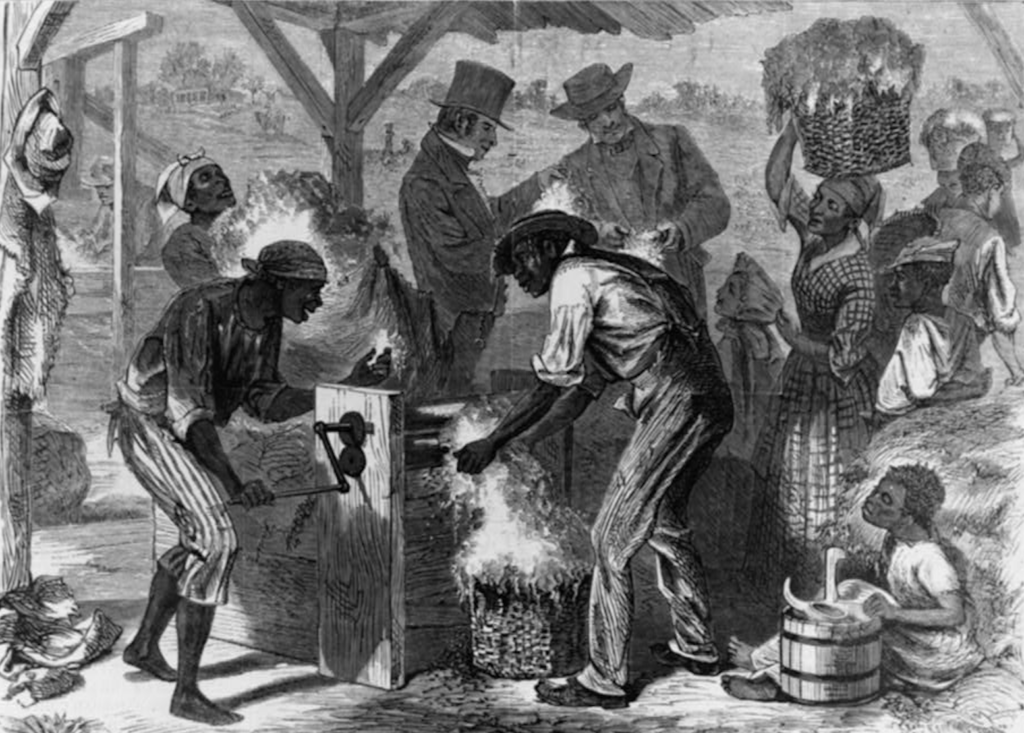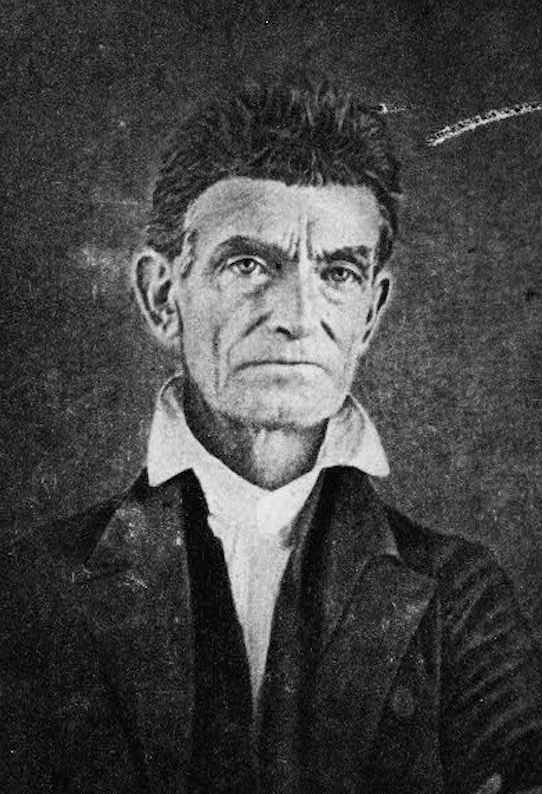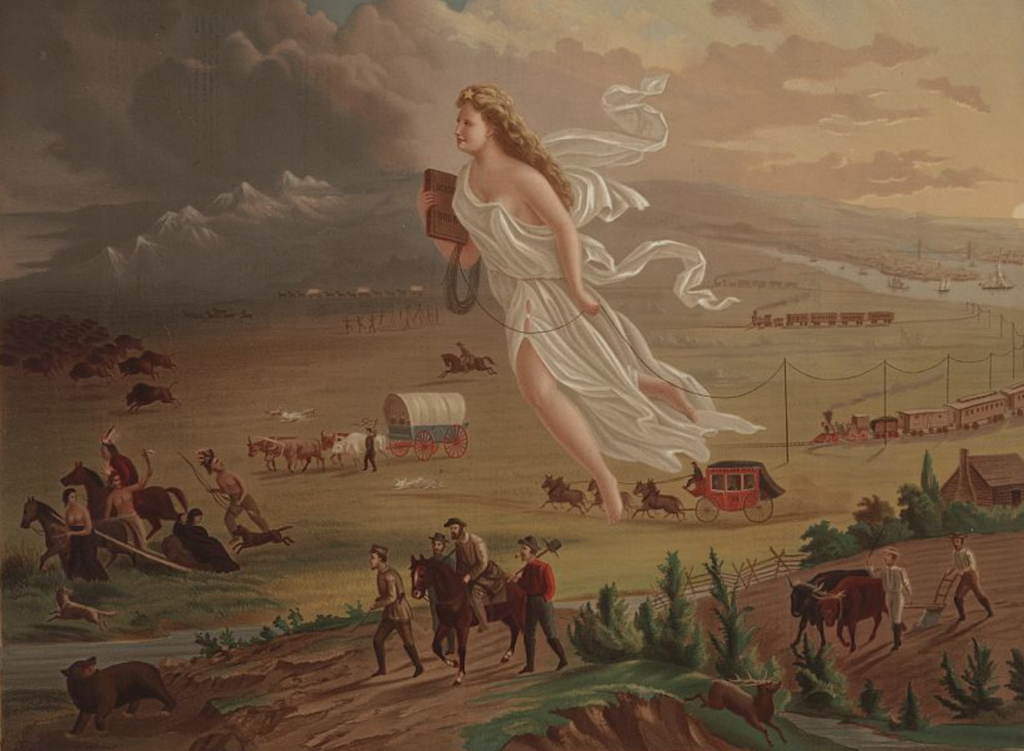Antebellum Period Funny Memes About Antebellum Period
When was the Antebellum Period?
The Antebellum Period in American history is generally considered to be the period before the Civil War and after the War of 1812, although some historians expand it to all the years from the adoption of the Constitution in 1789 to the beginning of the Civil War. It was characterized by the rise of abolition and the gradual polarization of the country between abolitionists and supporters of slavery. During this same time, the country's economy began shifting in the north to manufacturing as the Industrial Revolution began, while in the south, a cotton boom made plantations the center of the economy. The annexation of new territory and western expansion saw the reinforcement of American individualism and of Manifest Destiny, the idea that Americans and the institutions of the U.S. are morally superior and Americans are morally obligated to spread these institutions.
The Cotton Economy In The South
In the South, cotton plantations were very profitable, at least until overplanting leached most of the nutrients from the soil. Advances in processing the fiber, from Eli Whitney's cotton gin to the development of power looms and the sewing machine, increased demand for cotton to export from the South to England and the mills of New England. Plantation owners were able to obtain large tracts of land for little money, particularly after the Indian Removal Act was passed in 1830. These plantations depended on a large force of slave labor to cultivate and harvest the crop—most white farmers in the 19th century wanted and were able to obtain their own farms as the U.S. expanded south and west, and slaves not only provided a labor source that couldn't resign or demand higher wages, their progeny insured that labor source would continue for generations.

The demand for slave labor and the U.S. ban on importing more slaves from Africa drove up prices for slaves, making it profitable for smaller farms in older settled areas such as Virginia to sell their slaves further south and west. Most farmers in the South had small- to medium-sized farms with few slaves, but the large plantation owner's wealth, often reflected in the number of slaves they owned, afforded them considerable prestige and political power. As the quality of land decreased from over-cultivation, slave owners increasingly found that the majority of their wealth existed in the form of their slaves; they began looking to new lands in Texas and further west, as well as in the Caribbean and Central America, as places where they might expand their holdings and continue their way of life.
Early Industrialization and the Rise in Manufacturing in the North
The early industrial revolution began with textile industry in New England, which was revolutionized by Samuel Slater. Slater was a former apprentice in one of Britain's largest textile factories who emigrated to Rhode Island after learning that American states were paying bounties to people who could help replicate British textile machines, such as the spinning jenny, although the British government forbade the export of the machines or emigration of people with knowledge of them. In 1787, the horse-powered Beverly Cotton Manufactory had begun operating in Beverly, Massachusetts; in 1793, Slater opened the first fully mechanized mill in Pawtucket, Rhode Island. His system of independent mills and mill towns spread through the Blackstone Valley into Massachusetts.
In the 1820s, Slater's system was supplanted by the more-efficient Waltham or Lowell system. The Waltham system included power looms in the mill, rather than Slater's practice of having weaving done at local farms. The Waltham system also included specialized, trained employees to run the looms—mainly young women—giving rise to the concept of wage labor, which gradually began overtaking previous forms of labor, such as apprenticeship and indentured servitude, family labor, and slavery in industrialized areas. A population shift from farms to cities had already begun, but the promise of better income in factory jobs accelerated that movement.
Manufacturing advances were not limited to the textile industry alone. Similar advances occurred in other industries, including the manufacture of equipment, machinery, furniture, paints, paper, and glass. Every part of American industry and production was affected.
Penny Press and Affordable Newspapers
Among the areas benefiting from advances in technology was the printing business, in particular, the printing of newspapers. Most newspapers in the early 19th century cost six cents a copy and were affordable only to the upper classes, though a barter system often allowed readers to trade rags, whiskey or other goods for a subscription. Presses were still hand-powered and essentially unchanged from Gutenberg's design until 1810, when German printer Friedrich Koenig patented the steam-powered press. In 1843, American Richard M. Hoe made a further improvement with the rotary printing press, which arranged the material to be printed on a cylinder rather than a flat plate, allowing a much larger volumes of material to be printed—millions of copies in a day rather than thousands—at a lower cost. These advances led to a rise in the number of newspapers published, with more available at prices affordable to the working class—by 1860, about 3,000 newspapers were published in the U.S. with a circulation of roughly 1.5 million, in comparison with about 500 newspapers with a circulation of about 3,000 in 1820.
Papers were often read aloud in homes, bringing news of the government, politics, and local events. Significant speeches were sometimes printed in their entirety, giving politicians and social activists a much wider audience. Stories from one newspaper might be reprinted in others, sometimes with local commentary or editorial rebuttals added. The advent of the telegraph meant news from distant places could be disseminated much more rapidly. Newspapers also relied on news—factual or not—provided in the form of letters to the editor, which were usually unsigned or made use of a pseudonym such as Plato or A True American.
In the 1830s, the "penny papers" led a revolution in journalism. They sold for a penny each, making news and even literacy itself more accessible to the working class. Many stories in the penny papers were sensationalist and embellished (to say the least). Modern tabloids can trace their origins to the penny press—but so can modern mainstream newspapers. As the papers grew in circulation, they increased in size from one sheet to two or more. To fill those pages, editors added reporters with specific beats. Although sensational stories sold a lot of papers, so did opinion pieces. The increase in newspapers opened a new public forum—and means of entertainment—that was accessible to all.
Canals, Turnpikes, and Early Railroads
Following the Revolutionary War, business and political leaders recognized the need to further unify the country with roads. Local governments and private turnpike and railroad companies began building roads and canals. The War of 1812 and the rise of internal trade—between southern plantations and northern textile manufacturers—proved that the problem of internal transportation was far from solved and a federal system was needed, but various proposals to fund and build a national transportation system were deemed unconstitutional. The conservative Democratic Party in particular opposed federal funding of internal improvements. Instead, private companies proposed roads and canals, then enticed investors to provide fund building. In 1817, construction began on the Erie Canal to link Lake Erie and the Hudson River, inspiring a canal-building boom that lasted into the 1840s when railroads supplanted canals. Turnpike companies also experienced a boom—by 1830, more than 10,000 miles of turnpikes were operating in the east. Commissioners were authorized to collect tolls and were responsible for maintaining the stretch of road under their care.
The canal system shortened trade routes into many parts of the interior, and port cities like Baltimore and Philadelphia saw some of their business shifting to ports along canal routes. To compete, they began investing in railroads to reach the interior of the country, starting a railroad boom in the 1830s that would last until the Civil War and begin anew following the war. Railroads grew so quickly in the 1830s that they surpassed the mileage of the canals. Many were short-run railroads built to connect ports with points inland, which were then connected to each other by rail. Railroads were faster, more direct, and more reliable than turnpikes or the canal system. By 1856, the eastern coast was connected by railroad to the western side of the Mississippi, Chicago, and the Great Lakes. As with canals and roads, railroads were built with private funds generated "subscriptions"— the sale of stocks or bonds.
The Second Awakening
The Second Awakening was a religious revival that affected the entire country from about 1790 to the 1840s. It inspired the beginnings of the abolitionist movement in upstate New York. The basic theology popularized by the movement stated that individuals had a direct relationship with God that was unmediated by a church officials and that human dignity required freedom of will. Church membership increased, particularly among Methodists and Baptists following revivals and tent meetings, which had their greatest attendance on the frontier. Many challenged traditional beliefs and founded new denominations, including the Mormons, the Shakers, the Seventh Day Adventists, and the Unitarian Universalists. This rise in spirituality intensified evangelism in America, giving rise to a shift in morality and the advent of growing abolitionist and temperance movements.
Pre-Civil War Slave Rebellions
Slaves in the U.S. resisted their bondage through many passive forms of resistance, such as damaging equipment, working slowly, or keeping their culture and religious beliefs alive, although that often required secrecy. They also carried out open rebellions, risking everything for freedom. Several plots and rebellions occurred in antebellum America, notably Gabriel's Rebellion in 1800 in Richmond, Virginia; an uprising in Louisiana in 1811; and Denmark Vesey's conspiracy, which was uncovered in 1822 in Charleston, South Carolina.
One of the bloodiest rebellions in U.S. history occurred in August 1831 when Nat Turner organized a slave rebellion in Southampton County, Virginia. About 60 whites were killed and, after the rebellion was put down, the state executed 56 slaves accused of being part of it. Militias and mobs formed in the paranoid chaos that followed and anywhere from 100 to 200 innocent slaves were killed in the aftermath. In response to these rebellions, slave codes and laws that limited slaves' movements and their freedom to gather in groups tightened considerably.

In spite of this, plots and actual rebellions in slave-holding states continued into and through the Civil War. In October 1859, radical abolitionist John Brown led a group of followers in a raid to capture the U.S. arsenal at Harpers Ferry, Virginia (now West Virginia), in hopes of arming a general slave uprising. The raid failed and Brown and most of his band were executed, but when Northern abolitionists made him into a martyr, it fed Southern fears that the North wanted to wage a war of extermination on Southern whites. John Brown's Raid is considered one of the significant milestones on the road to the American Civil War.
Before The Civil War: Nullification Crisis
Objections in South Carolina to federal tariffs led to the Nullification Crisis in 1833. Having blamed the tariffs for part of the economic downturn in the 1820s, South Carolina passed a Nullification Ordinance in late 1832 that declared federal tariffs unconstitutional and unenforceable in South Carolina, and made military preparations to resist federal enforcement. Although President Andrew Jackson obtained Congressional authorization to use military force against South Carolina in late February 1833, but military confrontation was averted when Congress passing a revised tariff that met South Carolinian's demands and the state repealed its ordinance. When South Carolina next attempted to leave the Union following the election of Abraham Lincoln in 1860 it did not go it alone, immediately sending ambassadors to the legislatures of other slave states to ask them to also leave the Union and join the Palmetto State in forming a new Southern Confederacy. The ultimate result was four years of civil war that destroyed the Confederacy, ended slavery and established the supremacy of the federal government.
The Pre-Civil War Rise of Abolitionist Movement
Although the arguments raised by the Missouri Compromise had died down in the 1820s, several events in the late 1820s and early 1830s, including the Turner Rebellion and Nullification Crisis, revived the debate and gave rise to the Abolition Movement. Because of the Second Awakening, some began to see slavery as a sin, with emancipation as the only way to atone for this sin. The Quakers, who believed that all people were equal in the eyes of God, had been speaking out against slavery since the 1600s, forming the first abolitionist group in the 1790s.
In 1833, William Lloyd Garrison and Arthur Tappan founded the American Anti-Slavery Society. Although highly controversial with huge, often physically threatening public opposition, by 1840 the society had about 2,000 local auxiliaries with membership estimated to be between 150,000 to 200,000, including freed blacks like Frederick Douglass. Members met, passed resolutions, and publicly argued against slavery both in speeches and in abolitionist newspapers. Their tone became increasingly confrontational, condemning slave owners as sinners and advising Americans to ignore the part of the U. S. Constitution that required runaways to be returned to their owners. Many abolitionists helped form the Underground Railroad, leading slaves northward to freedom. Eventually, the society became part of a broader movement toward social reform, and many of its members joined in the movements supporting universal suffrage and feminism. The association of women's suffrage with the abolition movement caused many Southerners, including many Southern women, to oppose the suffrage movement in the 20th century, which nearly resulted in the defeat of the 19th Amendment.
By the 1850s, the Abolitionist Movement had gained enough traction to make Harriet Beecher Stowe's Uncle Tom's Cabin a bestseller, and it, in turn, led to increased membership in abolition societies. The novel's social impact played an important role in politics, contributing to the formation of the Republican party and the election of President Abraham Lincoln—which in turn led to Southern secession and Civil War.
Manifest Destiny and Westward Expansion
Journalist John O'Sullivan coined the term "Manifest Destiny" in 1845, embracing the belief that Americans and the institutions of the U.S. are morally superior and therefore Americans are morally obligated to spread those institutions. The concept already existed and had to some degree ever since the 13 colonies won their freedom from Great Britain; O'Sullivan gave it a name.
Belief in these principles led many well-meaning whites to try to replace the traditional cultures of nomadic native American tribes with a lifestyle more in keeping with Euro-American farming communities. In other instances, it simply was used to justify the ever-increasing demand for more land in the west.

In 1844, James K. Polk of Tennessee was elected president on a platform of westward expansion. He faced off with the British over control of the Oregon Territory and oversaw a successful war with Mexico, 1846–1848. The Mexican War and settling the Oregon question meant that the United States now stretched from the Atlantic to the Pacific. Western expansion soon took a major leap forward with the California Gold Rush, as thousands from the eastern states, as well as from foreign nations, headed for the territories of California and Nevada, hoping to strike it rich.
Effects of the Antebellum Period
The technological advances and religious and social movements of the Antebellum Period had a profound effect on the course of American history, including westward expansion to the Pacific, a population shift from farms to industrial centers, sectional divisions that ended in civil war, the abolition of slavery and the growth of feminist and temperance movements.
historynet magazines
Our 9 best-selling history titles feature in-depth storytelling and iconic imagery to engage and inform on the people, the wars, and the events that shaped America and the world.
stinsonmilatichated.blogspot.com
Source: https://www.historynet.com/the-antebellum-period-what-happened-in-america-before-the-civil-war/
0 Response to "Antebellum Period Funny Memes About Antebellum Period"
Yorum Gönder